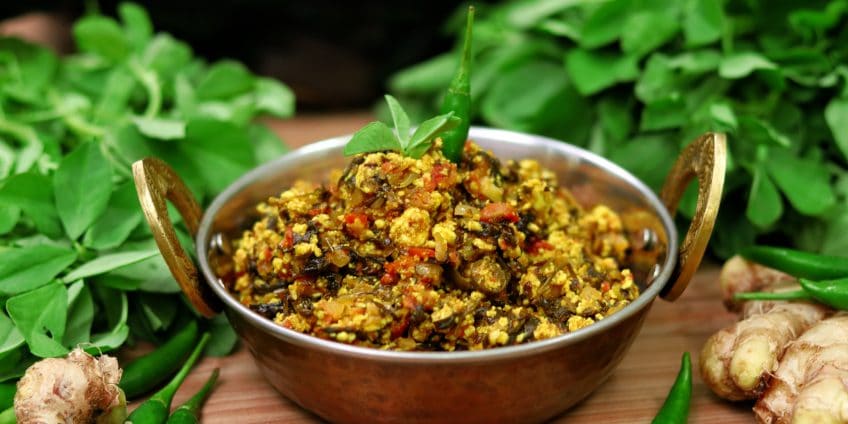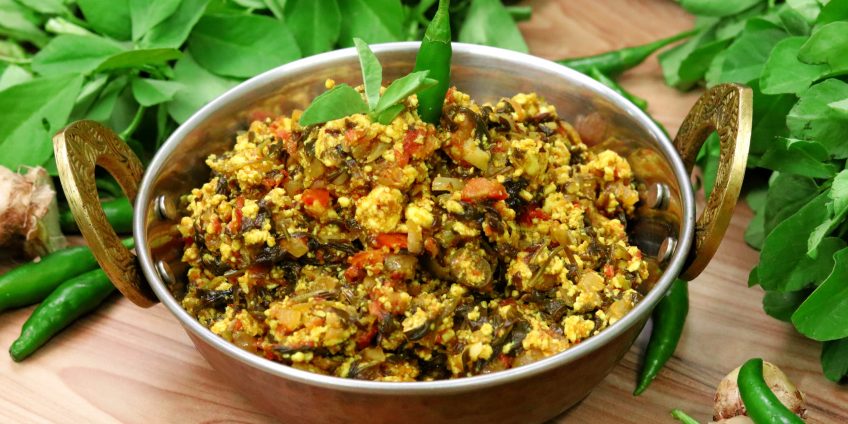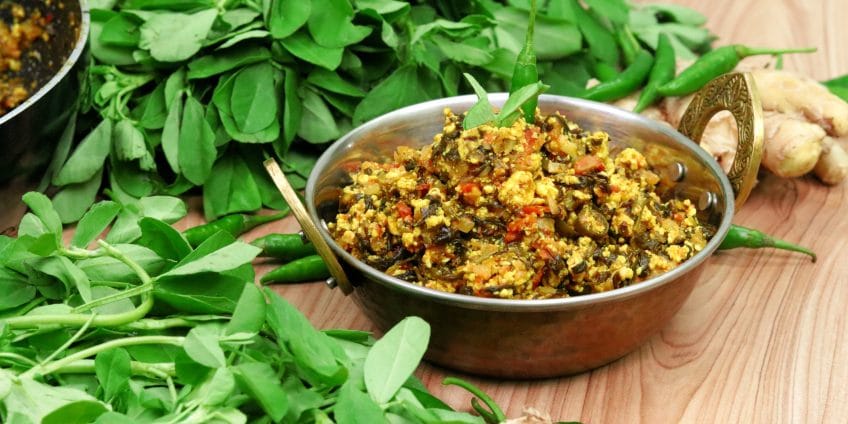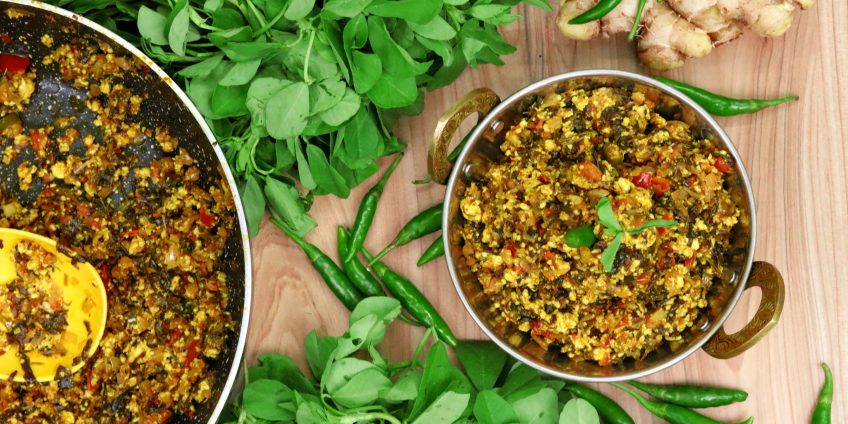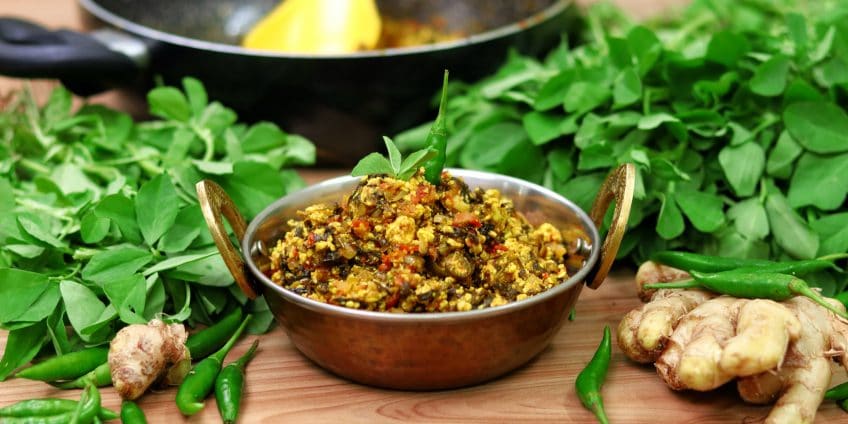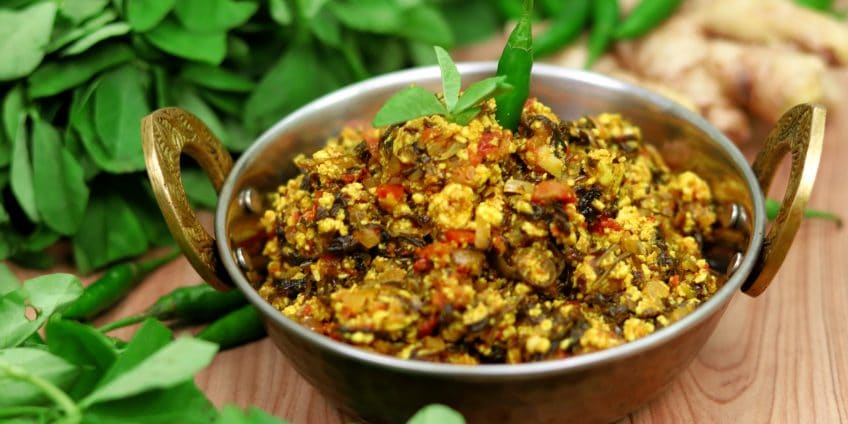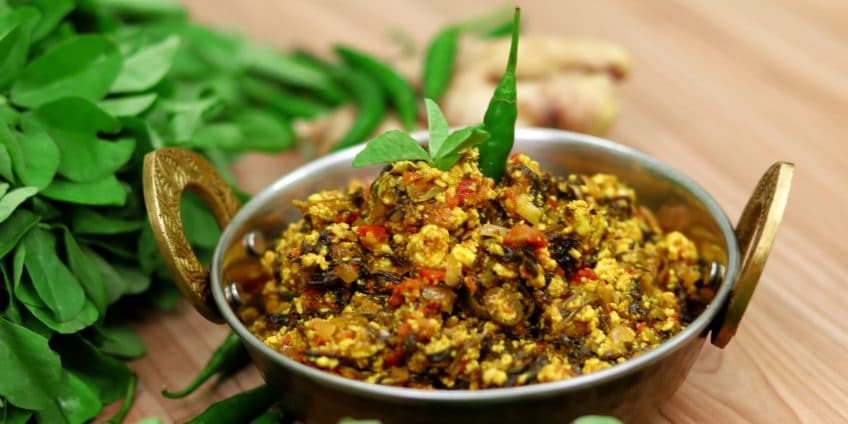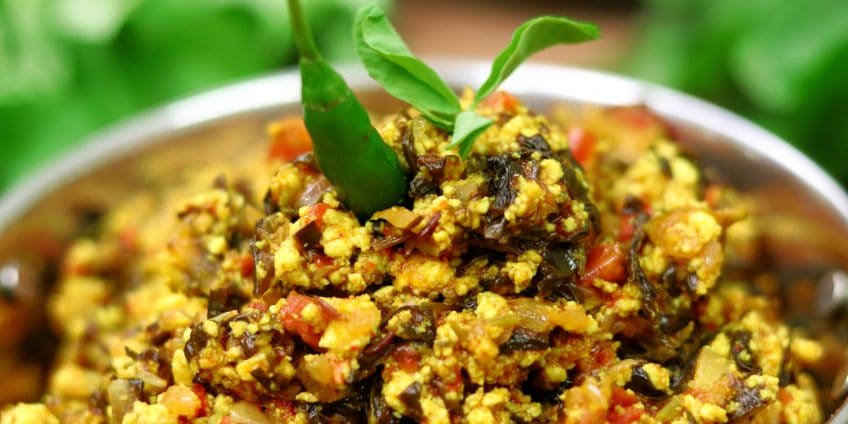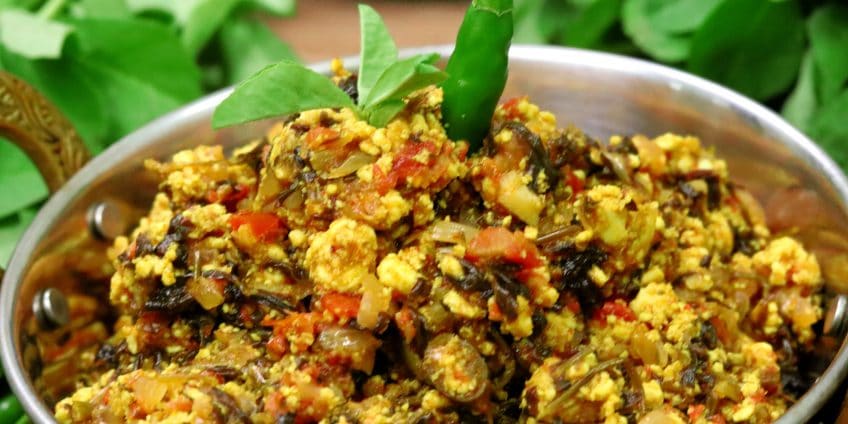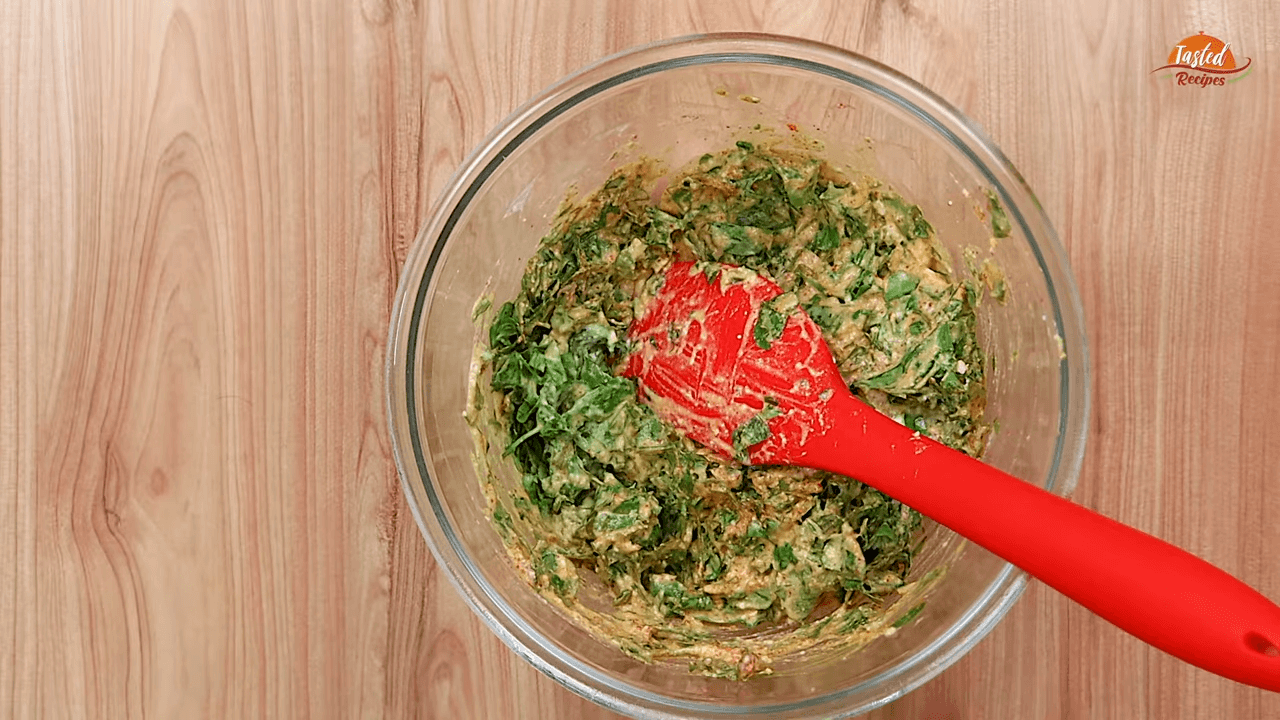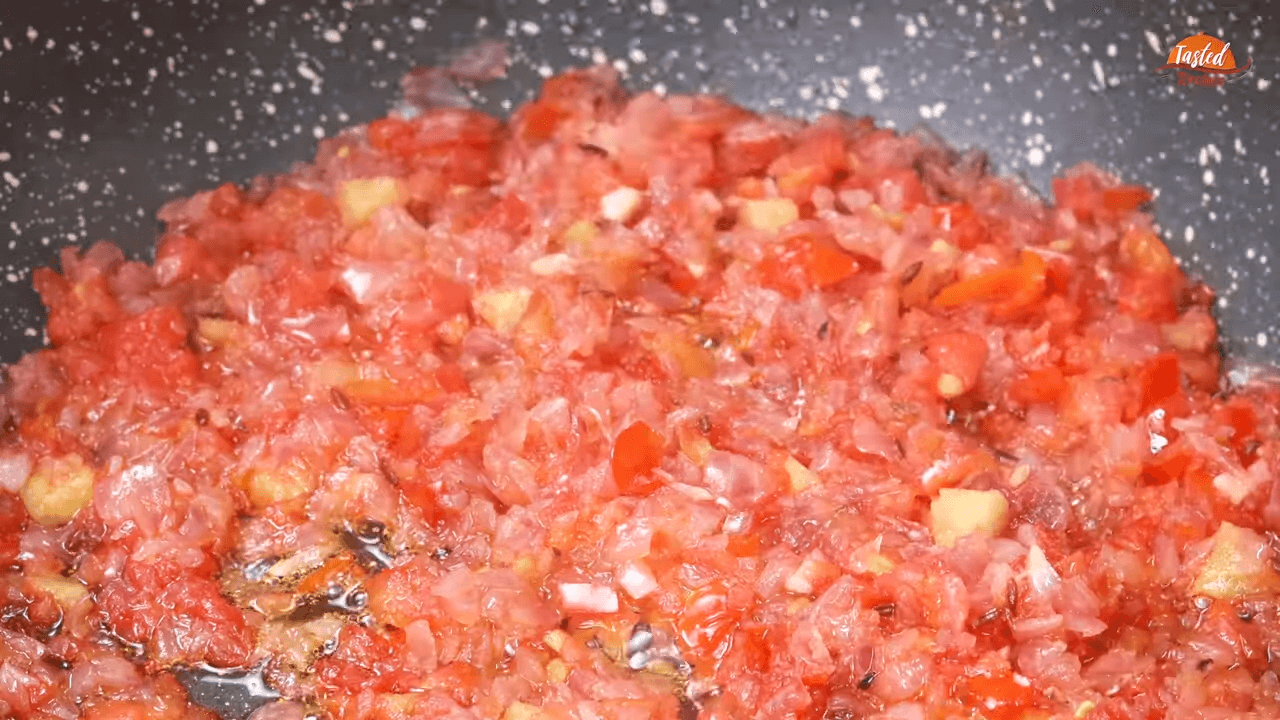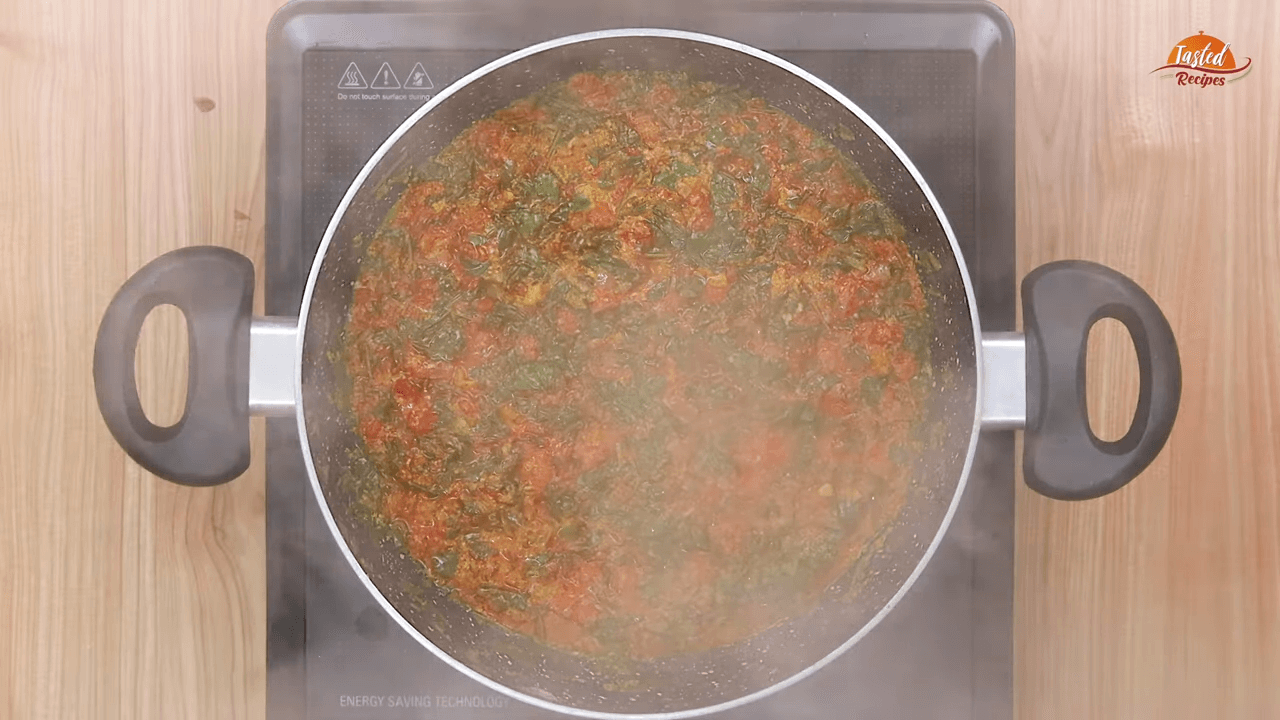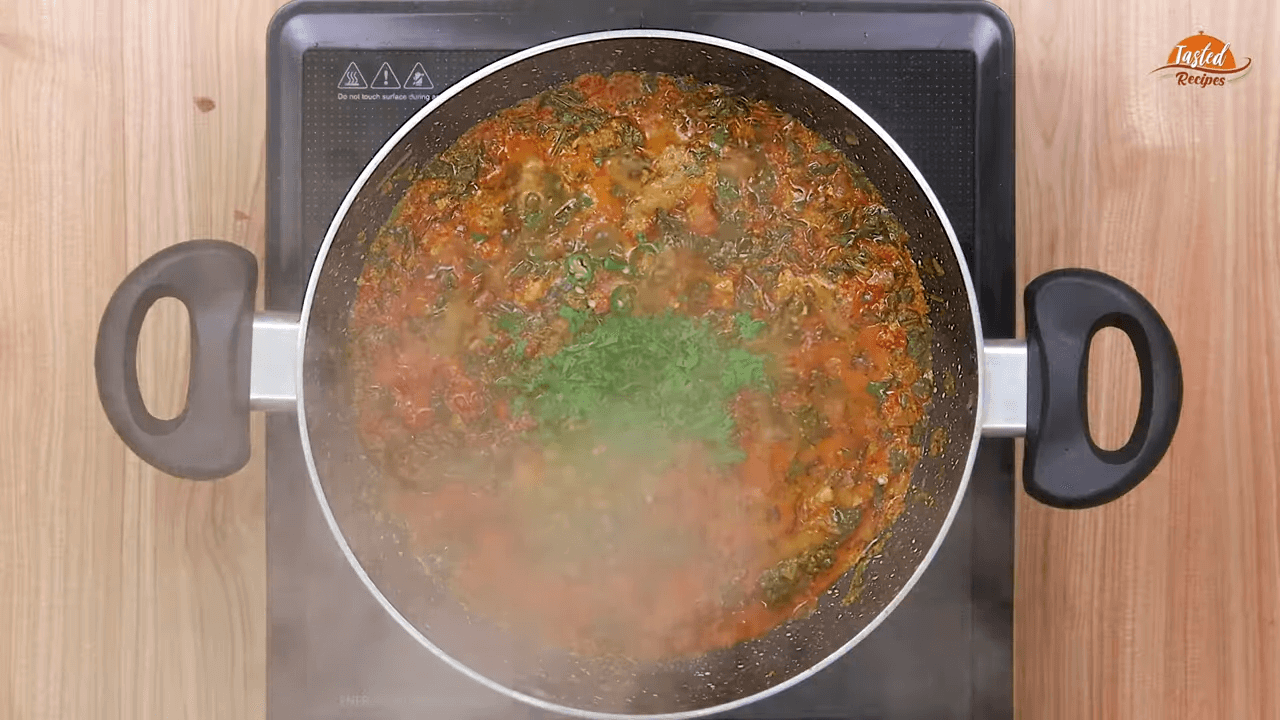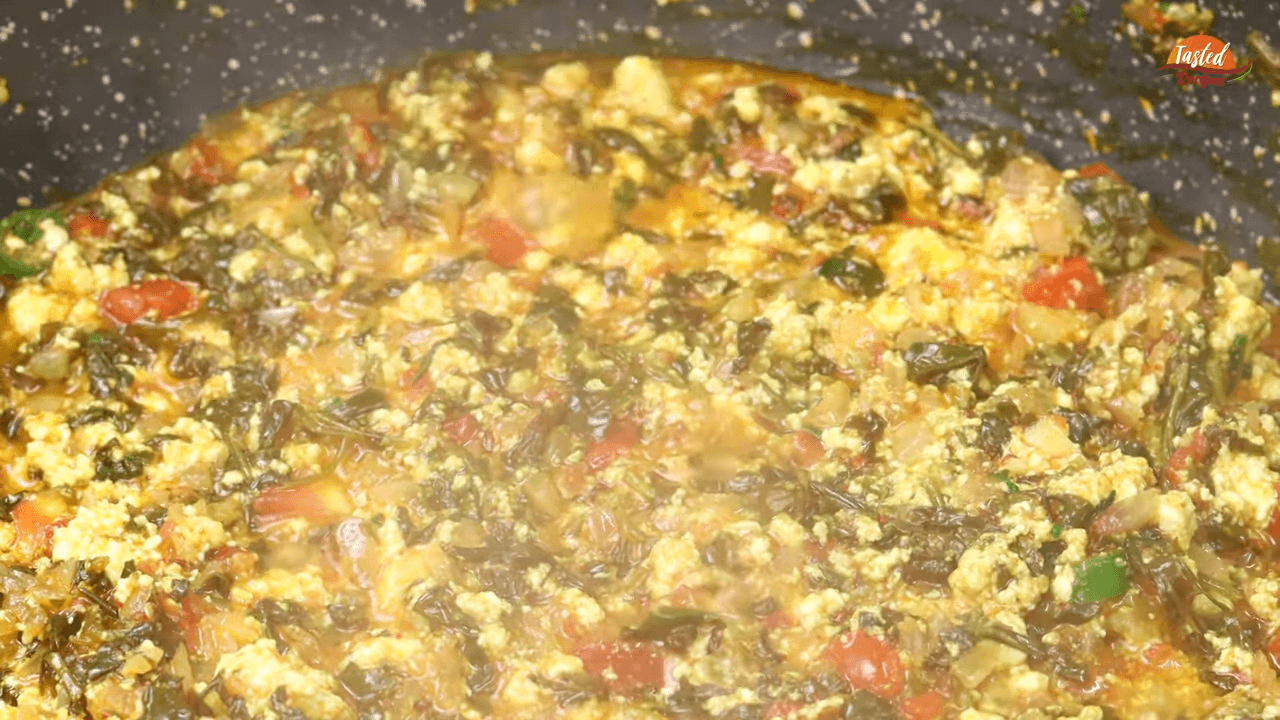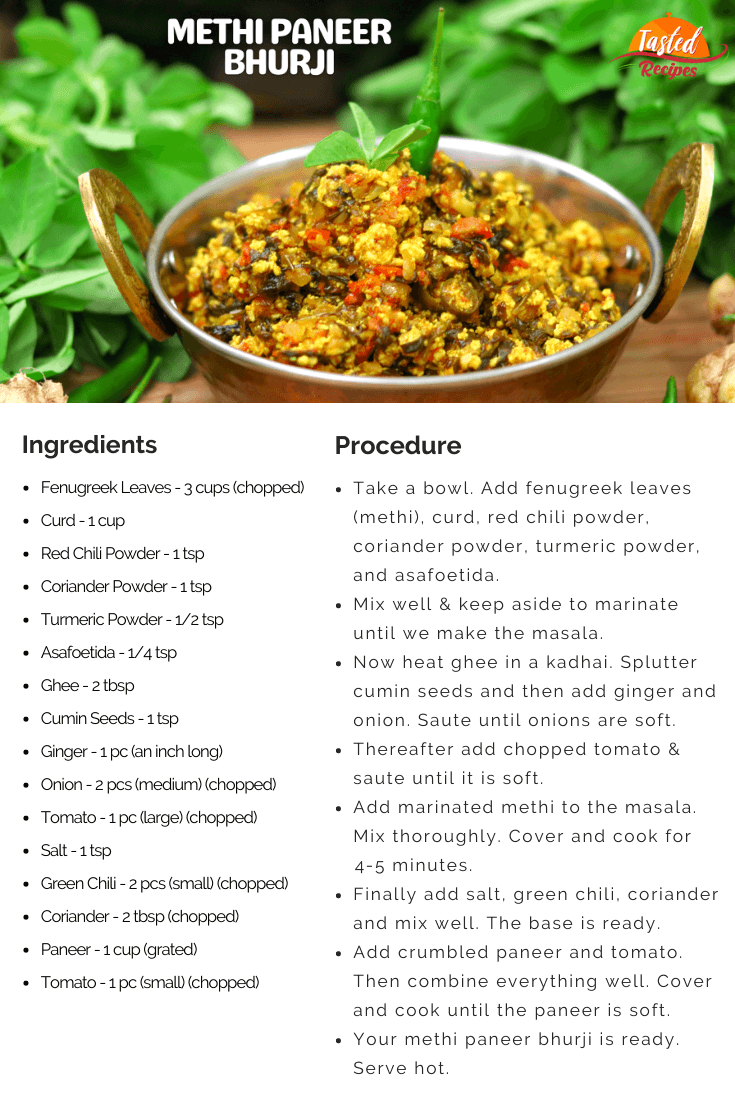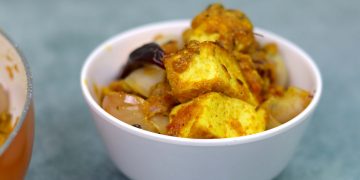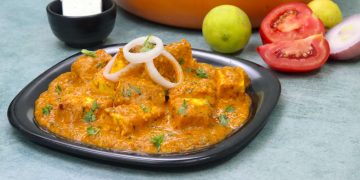Methi Paneer Bhurji is the grab-and-go recipe suitable for office tiffin and school lunch boxes. Your family members will love and gorge on this lip-smacking like anything. So let’s take a look at what it is.
Crumbled or grated paneer mixed with methi leaves gives you methi paneer bhurji. If you know paneer bhurji, it will be easy to understand this recipe. However, we will be making this recipe differently.
Methi Paneer Bhurji Variations
The best thing about making this recipe is its multi-variant aspect. In other words, you can make a whole new dish using the base of this recipe. The question is, what is the base? The fenugreek leaves, along with masala spice mix, make the base. The only thing we need to do is replace the paneer.
In other words, you will need to make the methi bhaji first and then add crumbled paneer. Hence, the base is methi bhaji. If you replace paneer with boiled potatoes, you will get aloo methi sabji.
Similarly, you can replace the boiled potato with cauliflower too. So here’s the list of boiled veggies that you can pair with methi bhaji.
- Pigeon Peas (Tuvar Dana)
- Green Peas (Matar)
- Carrots (Gajar)
- French Beans (Fansi)
Making the Base of the Methi Paneer Bhurji
The word “making the base” here means cooking the methi bhaji. We will be marinating the methi leaves in curd and powdered masala. Doing this will give ample time to flavours to mix and match.
You can even do the opposite of what I said above. You can directly add masala powders to the pan instead of adding them to marinate. Of course, there are chances that your masala might burn or overcook. But if you marinate using curd, masala and methi leaves’ their natural taste and aroma remain intact. That’s the reason why marinating is a part of the recipe.
Saute the marinated methi leaves using regular tadka items. Your methi bhaji is ready. It is our basic layer of the methi paneer bhurji. When you add paneer, boiled aloo, matar, gajar, carrots or french beans, the name of the dish changes accordingly.
To Marinate or Not to Marinate?
Marination is what I suggest before cooking if needed, provided you have ample time on hand. Here I have marinated methi leaves with masala powders before cooking. I could have directly cooked without marinating, but the required flavours would not have surfaced.
There’s an entirely different side to marination. When you marinate the fenugreek leaves with spice and masala powders, you allow the seasonings to enter the methi leaves & stay there during the cooking process. By doing this, your methi leaves won’t dry out when cooked.
Therefore, don’t skip the marination. Instead, try it out this time.
Methi Paneer Bhurji Extra Shots
Since we are dealing with a leafy vegetable that has an attractive colour, there are sure things you need to keep in mind. Here they are.
Fenugreek Leaves
Use large leaf fenugreek leaves and not the smaller ones. Both are visually different; hence there’s no chance of error while selecting them. Additionally, use fresh leafy methi. Wash before chopping them off.
Marinating Fenugreek Leaves (Methi)
I have already explained above why marination is crucial. Make sure you do the same. Add masala powders during marination to bring out all the flavours. Set aside and allow the methi leaves to marinate properly.
Tomato
In this recipe, I have added tomato twice. Adding tomato a second time is to add the raw taste. The sweet & tangy tomato flavour will enrich the overall taste of the recipe.
Green Colour of the Methi
Maintaining the green colour of the methi leaves is a tough job. Not only methi leaves, but it is the same with any given leafy vegetable. When these veggies undergo intense heat, it is hard to control their natural colour. Hence, do not worry about the green colour. Therefore, focus on cooking the methi leaves appropriately.
Paneer
Either crumble the paneer or grate it using a grater doesn’t matter here. The shape of the paneer won’t define the outcome of your final dish. Just remember that you don’t add large paneer pieces.
Mathi Paneer Bhurji FAQs
Now that we have sufficient info about our recipe, let’s quickly answer your queries. Read below.
What type of fenugreek leaves do we have to use?
There are two types of methi, aka fenugreek leaves – One has big leaves and the other with smaller ones. Here we have to use the one with big leaves methi, also known as moti methi or metho.
Can I use dry methi or Kasuri methi?
Don’t use dry or Kasuri methi because they are for seasoning. Additionally, dry methi has an intensely bitter flavour. This intense flavour will overpower everything else in the recipe.
Why use curd for marination?
Curd plays a vital role in the marination. It acts as a catalyst to penetrate fluids and seasonings deep into the fenugreek leaves. Moreover, curd tenderizes much more gently and effectively than traditional marinades.
Will my methi paneer bhurji be bitter?
It won’t be bitter since it is marinated in curd and thoroughly cooked afterwards. By doing this, the bitterness of the fenugreek leaves will go away. On the other hand, you will experience a mildly bitter taste even after cooking. So a slight bitterness is okay, I guess.
Can I swap curd with yoghurt?
Yes, you can substitute curd with yoghurt, but it must be plain yoghurt. Flavoured yoghurt will altogether change the taste profile of the recipe.
What is the difference between methi paneer and aloo methi?
There’s a big difference between methi paneer and aloo methi ki sabji. The first thing is aloo and paneer. They both are different ingredients. The only similarity is that both have fenugreek, aka methi, in common.
So that was our methi paneer bhurji. I hope you all liked the recipe. Get in touch with me via comments. See you all in the following recipe.
